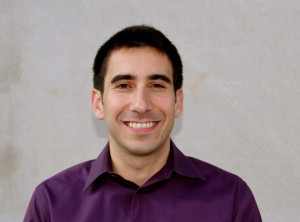I confess that I don’t know very much about tools. However, I do know enough to recognize that the question, “What tool should I use?” must be asked in some context. Just as you wouldn’t use an Allen wrench to pound in a nail, you wouldn’t want to use a survey instrument that was mismatched for the information that you desire.
There are three assessment tools which lend themselves nicely to congregations and non-profit organizations: questionnaires, interviews and focus groups. These three methods work well because they are simple, easy to learn and enable you to use volunteers who have expertise in these areas. This post is going to review some basics about questionnaires.
If you are looking for more in-depth information about an issue, a questionnaire is not the tool to use. However, questionnaires are a good tool for efficiently gathering basic information from a large number of people at low cost. Today, through the use of inexpensive or free electronic questionnaire services, this method of gathering information has been made incredibly easy. But, there is a science to constructing questionnaires so that the data you get back actually answer the questions about which you want to learn.
Take a moment now to reflect on this question: when you speak with someone either in person or by telephone, how often are you misunderstood? Misunderstandings are frequent but can be corrected when you are in direct conversation with someone. However, when you have distributed a questionnaire to congregants, they will not have the benefit of asking for clarification. That is why it is critical to have someone with experience and expertise help you develop your questions.
Additionally, before you add a question to your questionnaire, ask yourself, “Do I really need to include it—is it germane to the issue?” There is an understandable temptation to ask questions which are not directly related to the assessment topic because you have people’s attention. But, if that temptation gets the better of you, you’ll limit the number of people who respond either because they will start to question your motives or because your have included too many questions.
Another good practice is to test questionnaires before you distribute them. By doing so, you’ll detect any unclear questions and get feedback on the length of the questionnaire. Typically, most volunteers will be willing to spend no more than about 15 minutes on a questionnaire. If they see a questionnaire which has over 20 to 25 questions, you will likely lose them. (This observation is based on my experience.) Aim for a greater response rate by limiting the number of questions. Those who are more invested in your organization, like board members, may be willing to spend more time as they better understand the importance of the effort. Still, you need to explain to people why you are asking for their help in supplying this information, how you hope it will be used and how you will inform them once it is used. In this way, they will be more likely to help you now and in the future. If you guarantee that responses will be confidential, which will increase the number of people who respond, then you must honor that confidentiality!
If you are using an electronic service, make sure that all of the potential respondents have access to a computer and know how to complete an online questionnaire. (Commonly used services are www.zoomerang.com and www.surveymonkey.com. You’ll also find that some newsletters, like Constant Contact, have a questionnaire feature.) Have you accounted for people with special needs? How about the elderly who may not like to use a computer but would respond to a telephone call?
With the right team of professionals and volunteers, you will be gratified by incorporating questionnaires as a part of program planning and congregational engagement into your activities. So—now it’s your turn to ask questions. Please fire away or share your experience with using electronic questionnaires.
Thanks,
Rabbi Hayim Herring
 Daniel Chiat, Measuring Success
Daniel Chiat, Measuring Success 